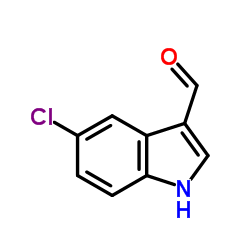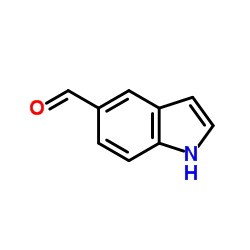| Structure | Name/CAS No. | Articles |
|---|---|---|
 |
5-Chloroindole-3-carboxaldehyde
CAS:827-01-0 |
|
 |
5-Bromoindole-3-carboxaldehyde
CAS:877-03-2 |
|
 |
Indole-5-carboxaldehyde
CAS:1196-69-6 |
|
 |
2-Methyl-1H-indole-3-carbaldehyde
CAS:5416-80-8 |
|
 |
7-Azaindole-3-carboxaldehyde
CAS:4649-09-6 |